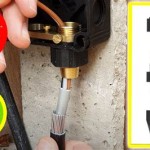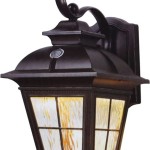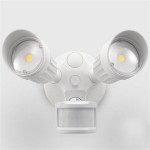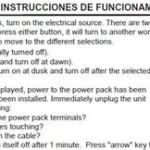Outdoor Sensor Light Won't Switch Off
Outdoor sensor lights offer convenience and security, automatically illuminating spaces when motion is detected. However, malfunctions can occur, leaving the light perpetually on. This can be frustrating and lead to increased energy bills. This article explores common reasons why an outdoor sensor light might stay on and provides troubleshooting steps to rectify the issue.
1. Sensitivity Adjustment
Most sensor lights have a sensitivity dial that controls how easily the light is triggered. If the sensitivity is set too high, the light may react to minor movements like swaying branches or small animals, causing it to stay on. Adjusting the sensitivity to a lower setting can often resolve this problem. The sensitivity dial is typically located underneath the sensor head.
2. Time Adjustment
Sensor lights also have a time adjustment setting, which determines how long the light stays on after motion is no longer detected. If the time is set too high, the light will remain illuminated for an extended period, even without further movement. Reducing the time setting can prevent the light from remaining on unnecessarily. This dial is often located near the sensitivity dial.
3. Obstructions Affecting the Sensor
Physical obstructions in the sensor's detection zone can interfere with its operation. Overhanging branches, bushes, or other objects can trigger the sensor or block its view, preventing it from registering the absence of motion. Trimming vegetation or removing obstructions within the sensor's range can restore proper function. Review the manufacturer's instructions for the sensor's detection pattern and range to identify potential obstructions.
4. Faulty Sensor
Over time, the sensor itself can malfunction. Exposure to the elements, wear and tear, or electrical issues can cause the sensor to become stuck in the "on" position. Testing the sensor by covering it with opaque material can help determine if it is functioning correctly. If the light remains on even when the sensor is covered, the sensor may need replacement. Consult a qualified electrician if you are unsure about replacing the sensor yourself.
5. Wiring Problems
Loose or damaged wiring in the light fixture can also cause it to remain on continuously. Check the wiring connections within the fixture to ensure they are secure and undamaged. Corrosion, frayed wires, or loose connections can disrupt the circuit and prevent the light from switching off. Repairing or replacing faulty wiring can resolve this issue. Always disconnect the power supply before working with electrical wiring.
6. Incorrect Light Bulb
While less common, using an incompatible light bulb can also cause issues. Some sensor lights are designed for specific types of bulbs, and using the wrong type can interfere with the sensor's operation. Refer to the manufacturer's instructions for the recommended bulb type and wattage. Replacing the bulb with a compatible one can often resolve the problem.
7. Daylight Setting
Many sensor lights have a "daylight" or "lux" setting. This setting controls the light's sensitivity to ambient light levels. If the daylight setting is incorrectly configured, the light may activate even during daylight hours. Adjusting the daylight setting to a higher level can prevent the light from switching on unnecessarily during the day. This setting allows the sensor to differentiate between daylight and darkness.
8. Power Surge or Electrical Fault
A power surge or an electrical fault in the building's wiring can sometimes damage the sensor light's internal circuitry, causing it to malfunction. Checking other electrical devices in the vicinity can help determine if a wider electrical issue exists. If a power surge is suspected, consider installing a surge protector to safeguard the sensor light and other electrical devices. Contact a qualified electrician to diagnose and repair any electrical faults.
9. Overheating
In some cases, overheating of the sensor or other components within the light fixture can cause it to malfunction. Ensure the light fixture is properly ventilated and that there are no obstructions blocking airflow around the unit. Excessive heat can damage the sensor and other components, leading to continuous operation. Allowing the fixture to cool down and addressing any ventilation issues may resolve the problem.
10. Testing the Override Switch (If Applicable)
Some sensor lights come with an override switch that allows the light to be manually turned on or off, bypassing the sensor. If the light is stuck in the on position, check if the override switch is inadvertently engaged. Disengaging the override switch should restore the sensor's normal operation. Consult the light fixture's manual to determine if it has an override switch and how to operate it.
My Outdoor Security Light Won T Turn Off George Brazil Plumbing Electrical Phoenix Az

Motion Activated Lighting Repairs Won T Turn Off

My Flood Lights Won T Turn Off Ehow

How To Reset A Motion Sensor Light Lighting And Ceiling Fans The Home Depot

What To Do If A Security Light Does Not Turn Off During The Day Ehow

How To Reset A Motion Sensor Light Lighting And Ceiling Fans The Home Depot

Sensor Lights How To Override And Avoid Confusion

How To Stop A Motion Sensor Light From Turning Off Rayzeek

Why Does My Motion Sensor Light Keeps Coming On And Won T Turn Off Rayzeek

Motion Sensor Controlled Light Won T Turn Off Again Flows Homey Community Forum
Related Posts







